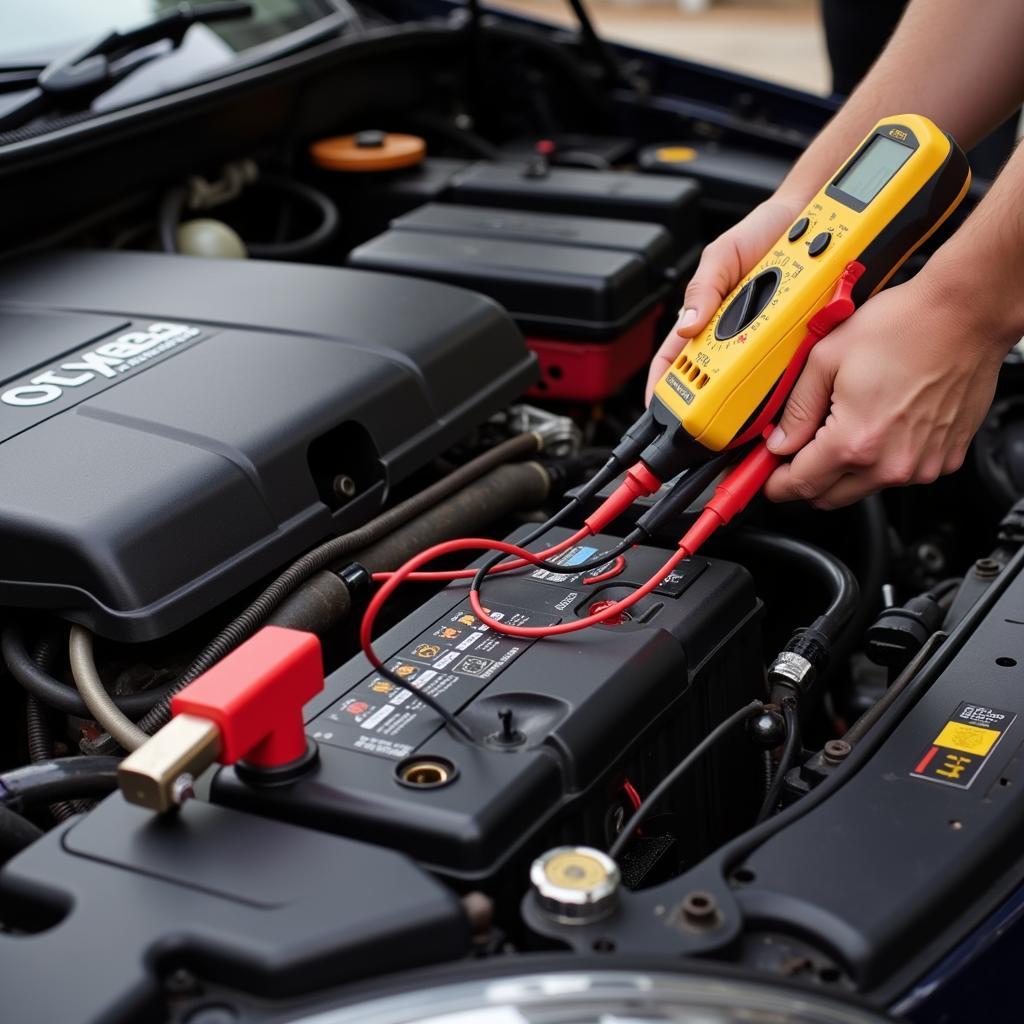A dead battery that won’t jump start can be incredibly frustrating. This article delves into the reasons why your dead battery might refuse a jump, offering troubleshooting tips and solutions to get you back on the road. We’ll cover everything from the basics to more advanced diagnostic techniques, ensuring you’re equipped to handle this common car issue.
What could be causing a dead battery that won’t jump start? There are several reasons why your car battery might not respond to a jump. Sometimes, it’s a simple fix like corroded battery terminals or loose connections. Other times, the problem might be more complex, such as a faulty alternator or a parasitic drain that’s continuously depleting your battery’s charge. prevent car battery from draining will help you prevent these types of issues in the future.
Common Causes of a Dead Battery That Won’t Jump
Corroded Battery Terminals
Corrosion on your battery terminals can disrupt the flow of electricity, preventing a successful jump. This is a common issue and often easily remedied.
Loose Battery Cables
Loose or damaged battery cables can also prevent the jump starter from effectively delivering power to your dead battery. Ensuring a tight connection is crucial.
Faulty Alternator
If your alternator is malfunctioning, it won’t recharge the battery even after a jump start. This means your car will likely die again shortly after.
Parasitic Drain
A parasitic drain refers to an electrical component that continues to draw power even when the car is off. This can gradually drain your battery, making it difficult to jump.
Internal Battery Damage
Sometimes, the battery itself is damaged internally, preventing it from holding a charge. In these cases, a battery replacement is typically necessary.
 Using a multimeter to test car battery voltage
Using a multimeter to test car battery voltage
Troubleshooting a Dead Battery That Won’t Jump
- Check the Jumper Cables: Ensure the cables are properly connected and in good condition. Red to positive, black to negative.
- Clean the Battery Terminals: Use a wire brush and baking soda solution to remove any corrosion.
- Tighten the Battery Cables: Make sure the cables are securely clamped to the terminals.
- Try a Different Jump Starter: A faulty jump starter could be the culprit.
- Inspect the Alternator: If the car starts but dies again quickly, the alternator is likely the issue. check engine light after battery died can help diagnose a potential alternator problem.
When to Seek Professional Help
If you’ve tried the troubleshooting steps above and your dead battery still won’t jump, it’s time to consult a professional. They can diagnose the problem more accurately and perform any necessary repairs.
“A common misconception is that all dead batteries can be jump-started. Internal damage, particularly in older batteries, often requires a replacement,” says John Smith, Automotive Electrical Engineer at Smith Automotive Solutions.
How to Jump Start a Car Correctly
Even if your dead battery won’t jump due to an underlying issue, knowing the proper jump-starting procedure is essential. reviving a dead car battery provides a step-by-step guide on the proper jump-start procedure. For those with a hybrid vehicle, prius hybrid battery dead offers specific guidance. Remember, after jump-starting, you may experience issues such as no power steering after jump starting, which requires further investigation.
Conclusion
A dead battery that won’t jump can be a sign of several underlying problems, from simple corrosion to a faulty alternator. By following the troubleshooting tips outlined in this article, you can identify the cause and get your car back on the road. Remember, if you’re unsure, seeking professional assistance is always the best course of action, especially when dealing with a dead battery.
FAQ
- Can a completely dead battery be jump-started? Sometimes, but internal damage might prevent it.
- How long should I let the car run after a jump start? At least 30 minutes to allow the alternator to recharge the battery.
- Why does my car battery keep dying? A parasitic drain or faulty alternator are common culprits.
- Is it safe to jump-start a car in the rain? Yes, as long as you take precautions and ensure the connections are dry.
- What are the signs of a bad alternator? Dim headlights, flickering dashboard lights, and the car dying shortly after a jump start.
- How often should I replace my car battery? Every 3-5 years, depending on usage and climate.
- Can I jump-start a car with a smaller engine? Yes, but it might take longer. Use the correct amperage cables and follow proper procedure.
